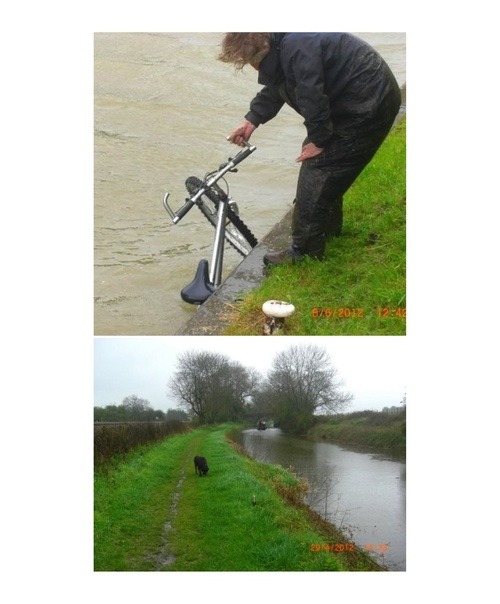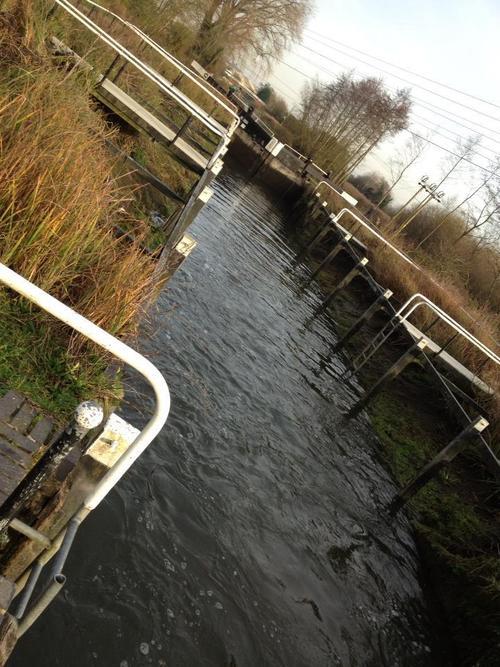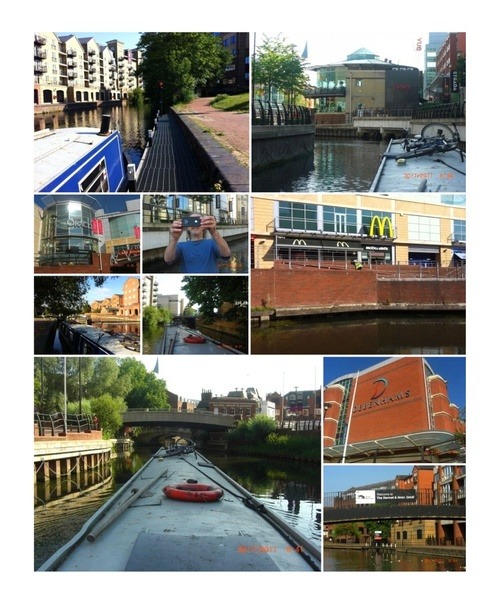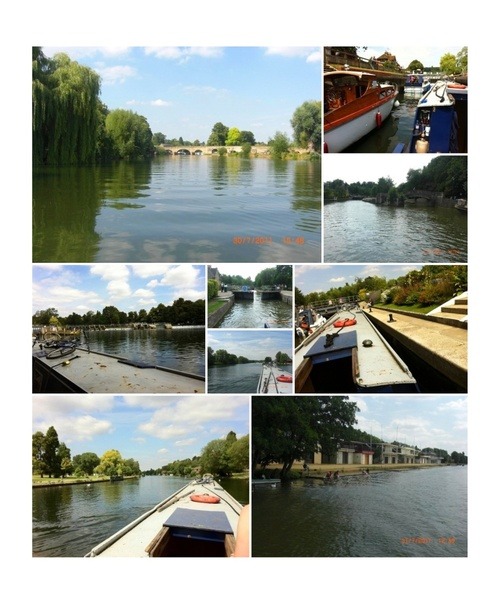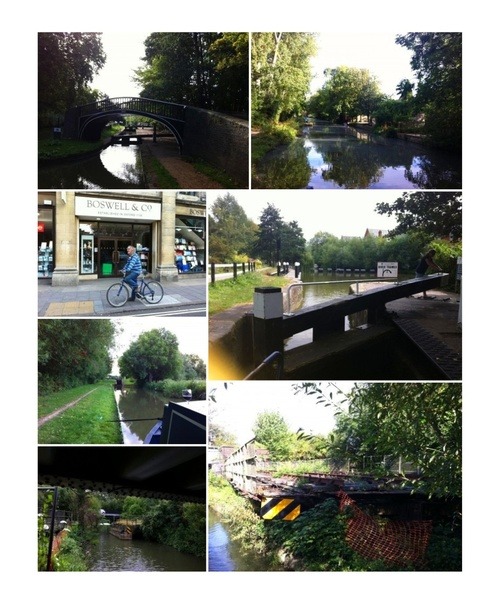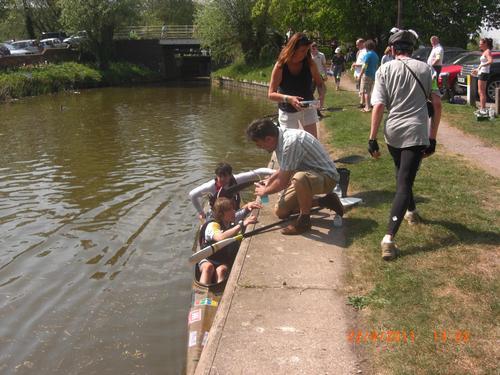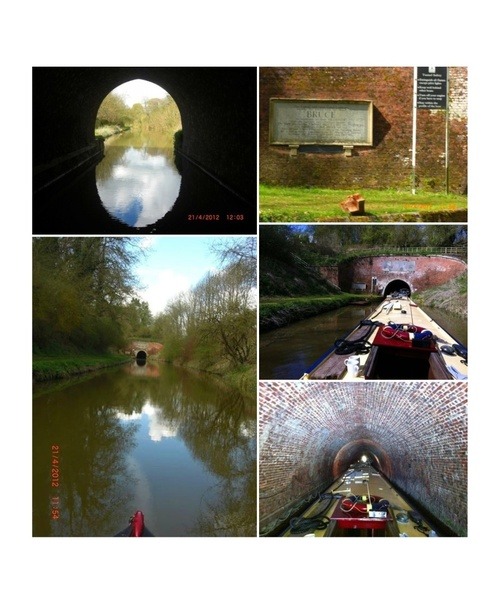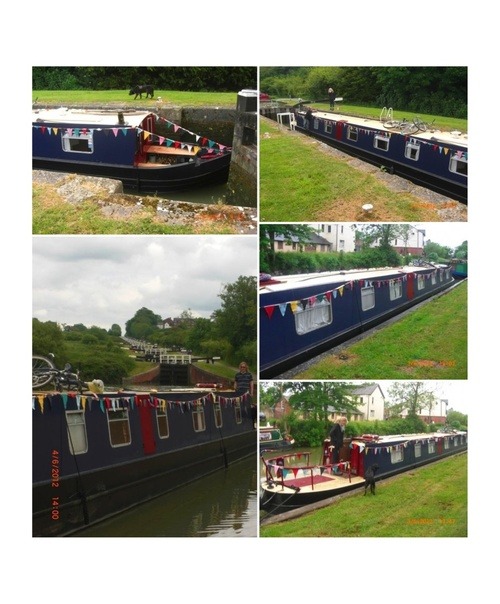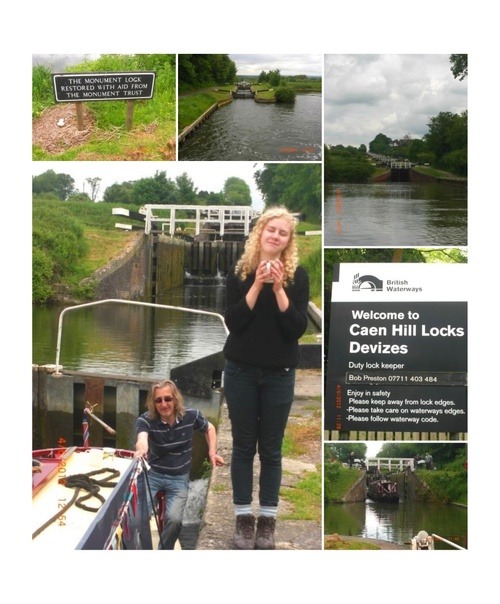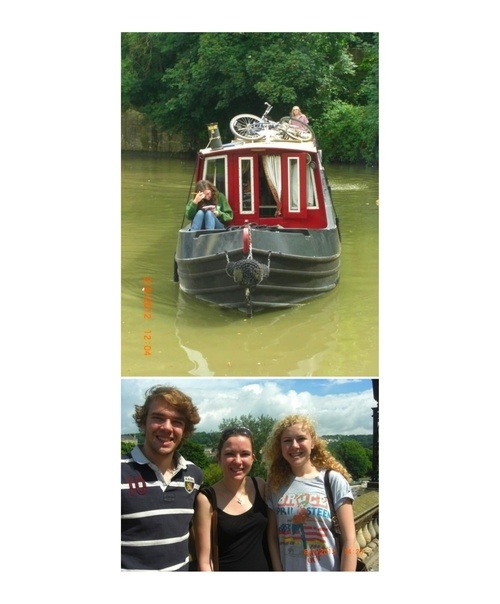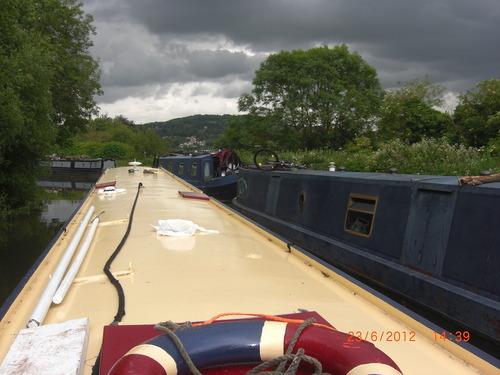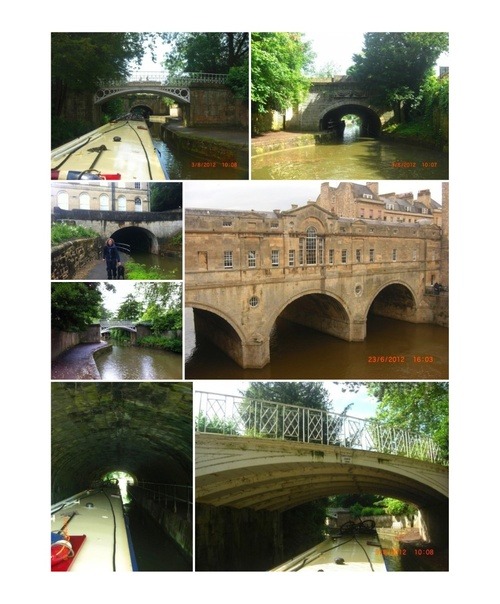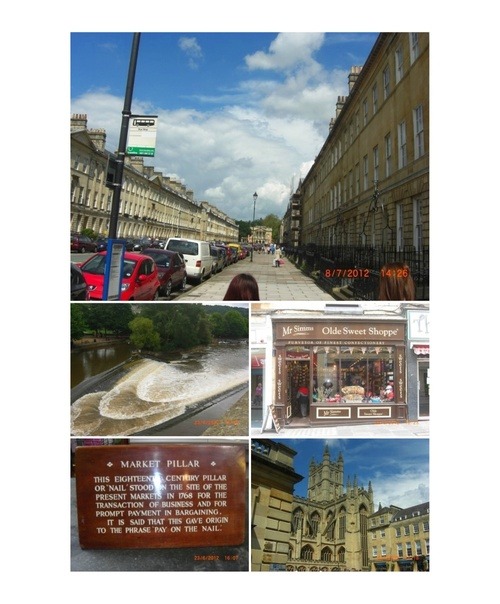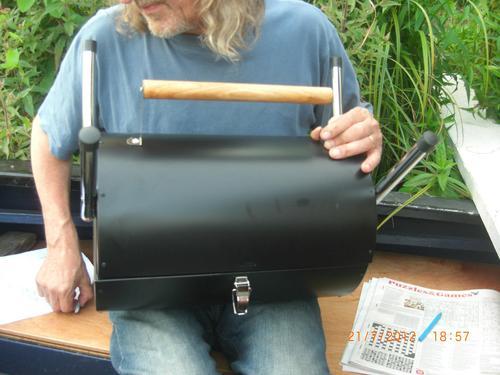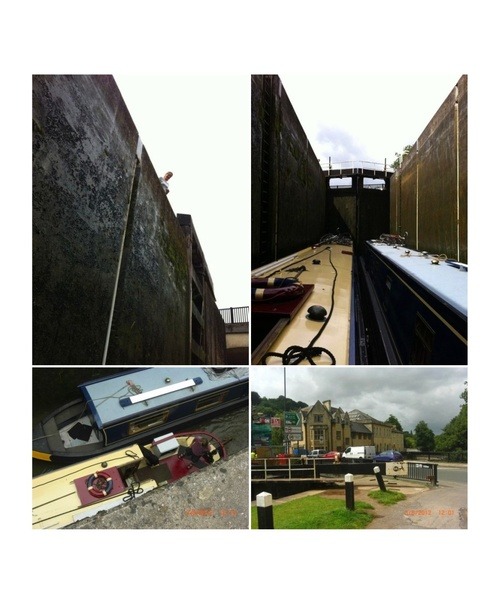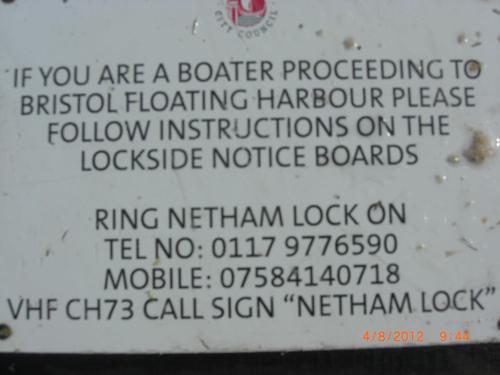The River Avon from Bath to Bristol
The final stretch to Bristol is on the River Avon. We were a bit nervous about this trip as there had been a lot of rain that summer and we had been getting email alerts every so often when the river was closed for a day or more at a time. When it gets too high it becomes too dangerous for inland craft to use and the locks are padlocked up.
Many of the old wharves in Bath had been converted to yuppie apartments as in many river./canal towns around the country.
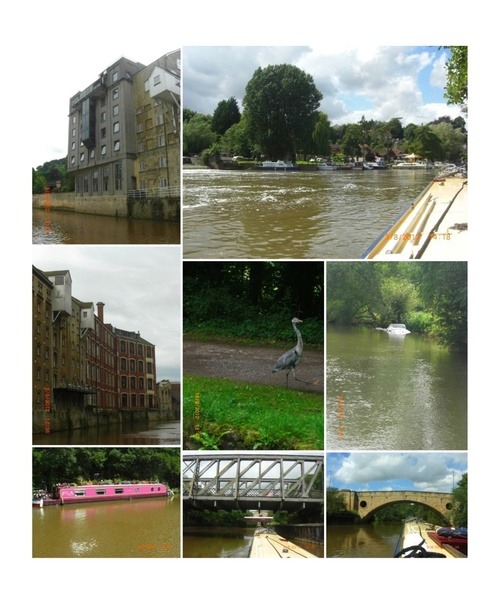
It was our first time on tidal waters so it gave Diesel a chance to wear his life jacket.
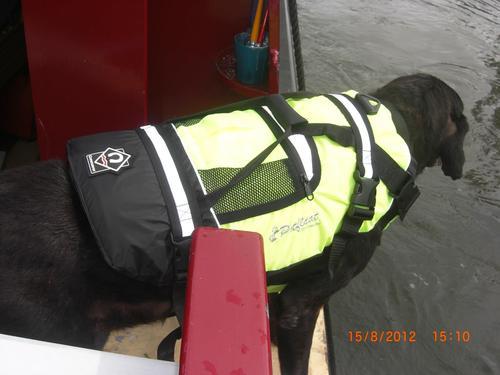
Some of the permanent moorings looked a bit precarious, especially these next to a weir.
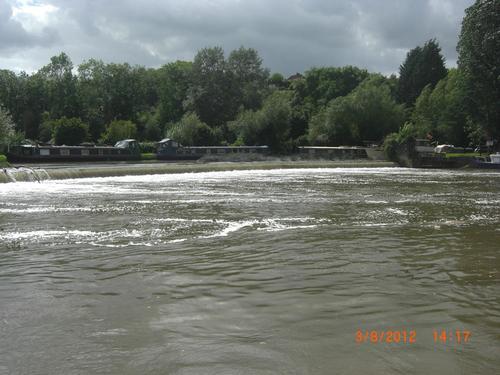
We saw more kingfishers per mile than we ever had anywhere else. At times it felt that they were the most common bird on the river. I have yet to get a close up picture of a kingfisher but will do one day. We had left the boat for two weeks at Bathampton in July. We returned on a lovely sunny Friday evening and were having a glass of wine on the front deck. Suddenly a kingfisher alighted on the mooring line no more than four feet away from us. We had noticed that they use mooring lines as fishing perches and this one had obviously got used to the boat being empty. There was no way I could get a picture as the first movement we made would scare it off. I will never forget the image of being that close to such a beautiful bird though.
Locks on the River Avon
The locks on the Avon were larger than on the canals but not as large as those on the River Thames. Like the majority of those on the canals they were all manually operated.

Hanham lock
This was the last lock before Bristol and you have to call the Bristol harbourmaster to get permission to leave the lock and continue downstream . We had to wait an hour for the tide to rise before we were allowed to go through. As you can see the river is same height both sides of the lock.
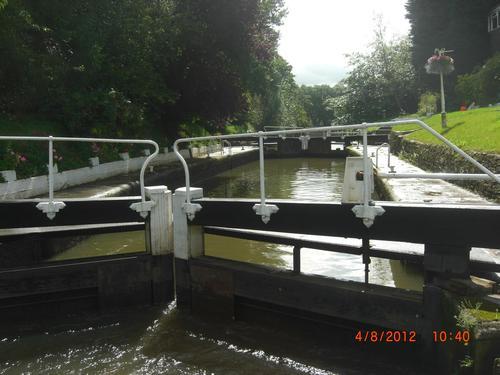
After three more miles we finally saw the sign that said we were at the harbour.
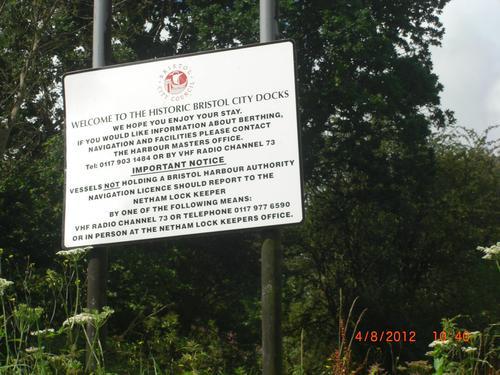
Entering and nosing round Bristol harbour
Bristol harbour felt massive and far larger than any basin we had been in before. There were no worries about finding places to turn. We had a good cruise around before finding where we wanted to moor. The harbour is 2 1/2 miles long so there were plenty of places to moor. We went to the dock by the Watershed first but then realised that it would be incredibly noisy at night because of the bars and restaurants. It transpired we were right as whenever we walked down there it was full of hen and stag parties so we nicknamed it ‘Hen alley’.
We ended up on new pontoons opposite the SS Great Britain down near the western end of the harbour. It was nice and quiet and hardly any other boats moored there whilst we stayed there. The weather was still pretty miserable as it was most of the 2012 summer.
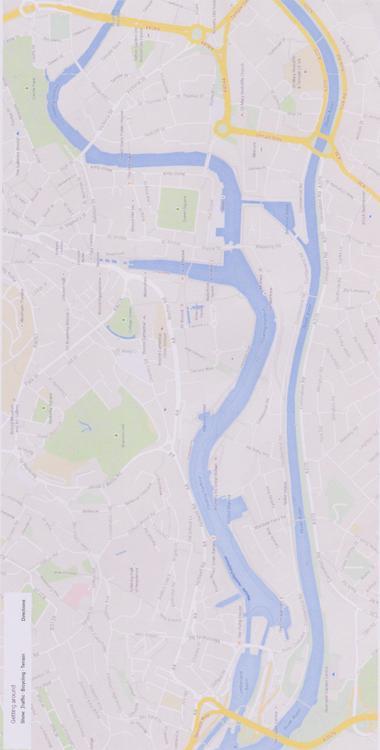
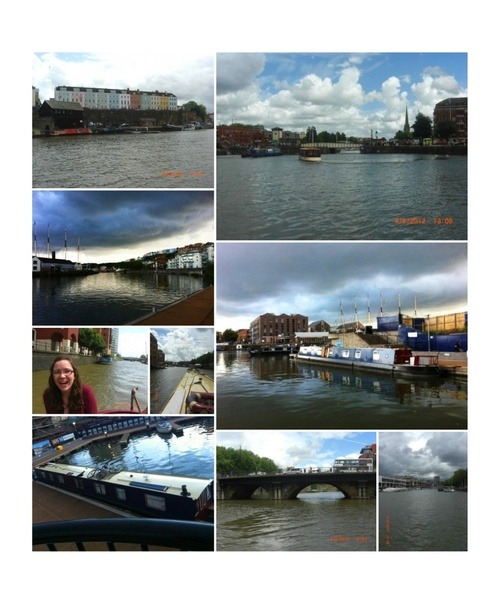
Around the harbour
We stayed in the harbour for three weeks whilst waiting for the weather to improve. We needed calm conditions before we could hire a pilot to take us out to Sharpness and up the River Severn to Gloucester.
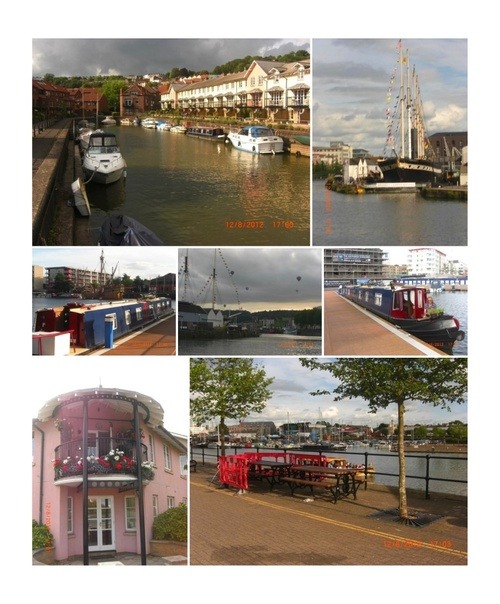
It would have been a fantastic journey going up the Severn, especially under the two M4 bridges. We had discussions with the pilots’ office every day but the weather was never settled enough. In the end we had to agree to try another year and head back east to Reading. It was also getting very expensive paying mooring fees in the harbour. I suspect we will end up doing it in the opposite direction one day when we have toured the north and are heading back down south through Stratford to Gloucester.
Our final evening in the harbour coincided with the closing ceremony of the 2012 Olympics and, ironically, it was a lovely warm evening and the squares with outside screens were packed.
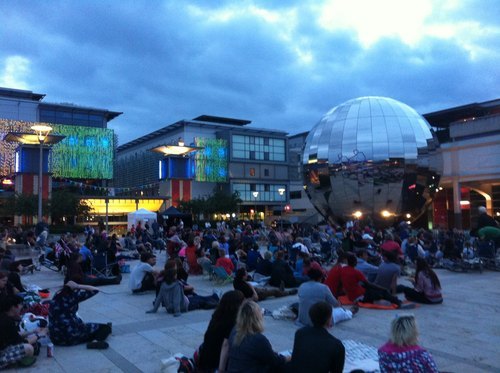
The final stretch to Bristol is on the River Avon. We were a bit nervous about this trip as there had been a lot of rain that summer and we had been getting email alerts every so often when the river was closed for a day or more at a time. When it gets too high it becomes too dangerous for inland craft to use and the locks are padlocked up.
Many of the old wharves in Bath had been converted to yuppie apartments as in many river./canal towns around the country.

It was our first time on tidal waters so it gave Diesel a chance to wear his life jacket.

Some of the permanent moorings looked a bit precarious, especially these next to a weir.

We saw more kingfishers per mile than we ever had anywhere else. At times it felt that they were the most common bird on the river. I have yet to get a close up picture of a kingfisher but will do one day. We had left the boat for two weeks at Bathampton in July. We returned on a lovely sunny Friday evening and were having a glass of wine on the front deck. Suddenly a kingfisher alighted on the mooring line no more than four feet away from us. We had noticed that they use mooring lines as fishing perches and this one had obviously got used to the boat being empty. There was no way I could get a picture as the first movement we made would scare it off. I will never forget the image of being that close to such a beautiful bird though.
Locks on the River Avon
The locks on the Avon were larger than on the canals but not as large as those on the River Thames. Like the majority of those on the canals they were all manually operated.

Hanham lock
This was the last lock before Bristol and you have to call the Bristol harbourmaster to get permission to leave the lock and continue downstream . We had to wait an hour for the tide to rise before we were allowed to go through. As you can see the river is same height both sides of the lock.

After three more miles we finally saw the sign that said we were at the harbour.

Entering and nosing round Bristol harbour
Bristol harbour felt massive and far larger than any basin we had been in before. There were no worries about finding places to turn. We had a good cruise around before finding where we wanted to moor. The harbour is 2 1/2 miles long so there were plenty of places to moor. We went to the dock by the Watershed first but then realised that it would be incredibly noisy at night because of the bars and restaurants. It transpired we were right as whenever we walked down there it was full of hen and stag parties so we nicknamed it ‘Hen alley’.
We ended up on new pontoons opposite the SS Great Britain down near the western end of the harbour. It was nice and quiet and hardly any other boats moored there whilst we stayed there. The weather was still pretty miserable as it was most of the 2012 summer.


Around the harbour
We stayed in the harbour for three weeks whilst waiting for the weather to improve. We needed calm conditions before we could hire a pilot to take us out to Sharpness and up the River Severn to Gloucester.

It would have been a fantastic journey going up the Severn, especially under the two M4 bridges. We had discussions with the pilots’ office every day but the weather was never settled enough. In the end we had to agree to try another year and head back east to Reading. It was also getting very expensive paying mooring fees in the harbour. I suspect we will end up doing it in the opposite direction one day when we have toured the north and are heading back down south through Stratford to Gloucester.
Our final evening in the harbour coincided with the closing ceremony of the 2012 Olympics and, ironically, it was a lovely warm evening and the squares with outside screens were packed.

